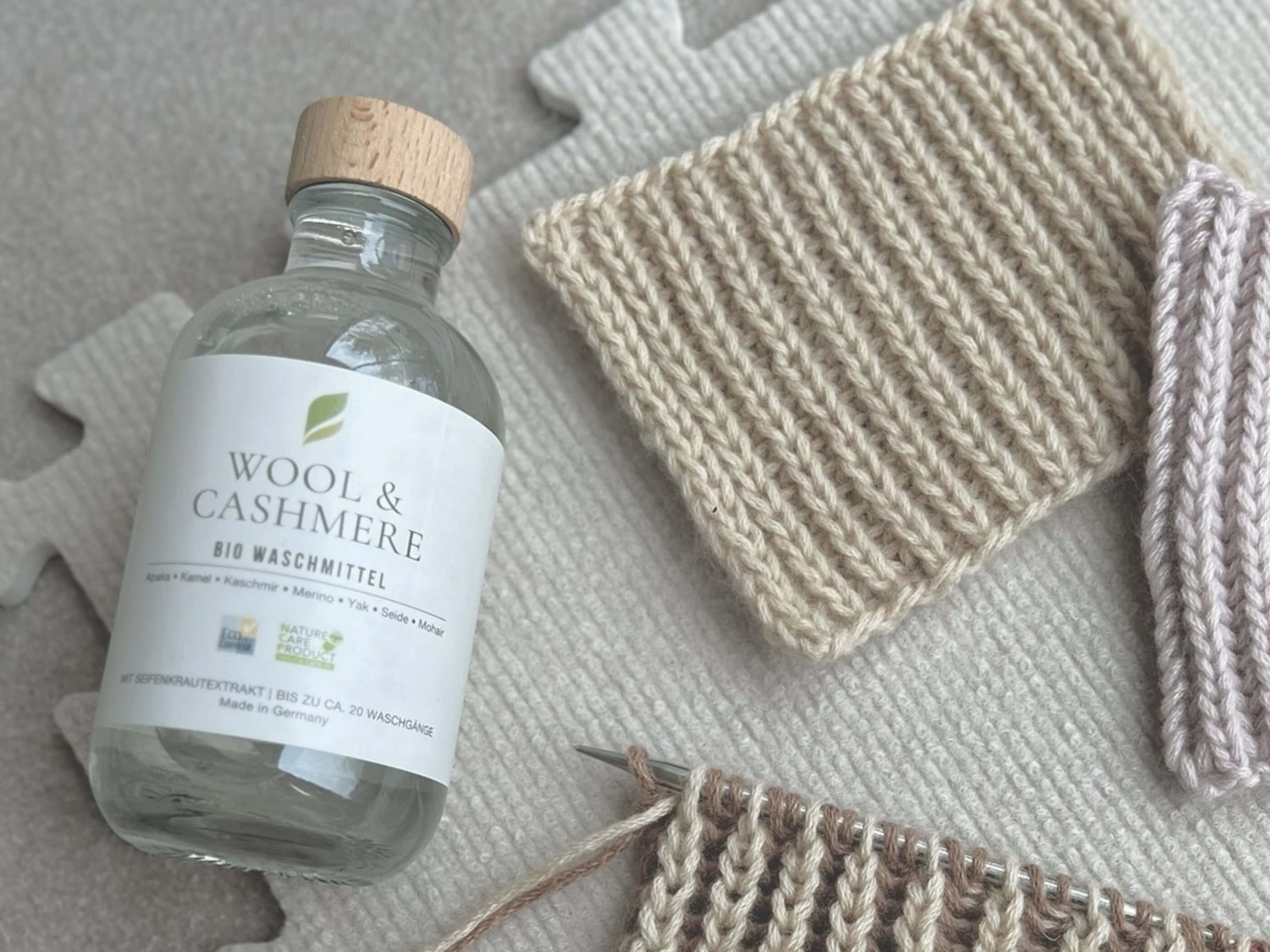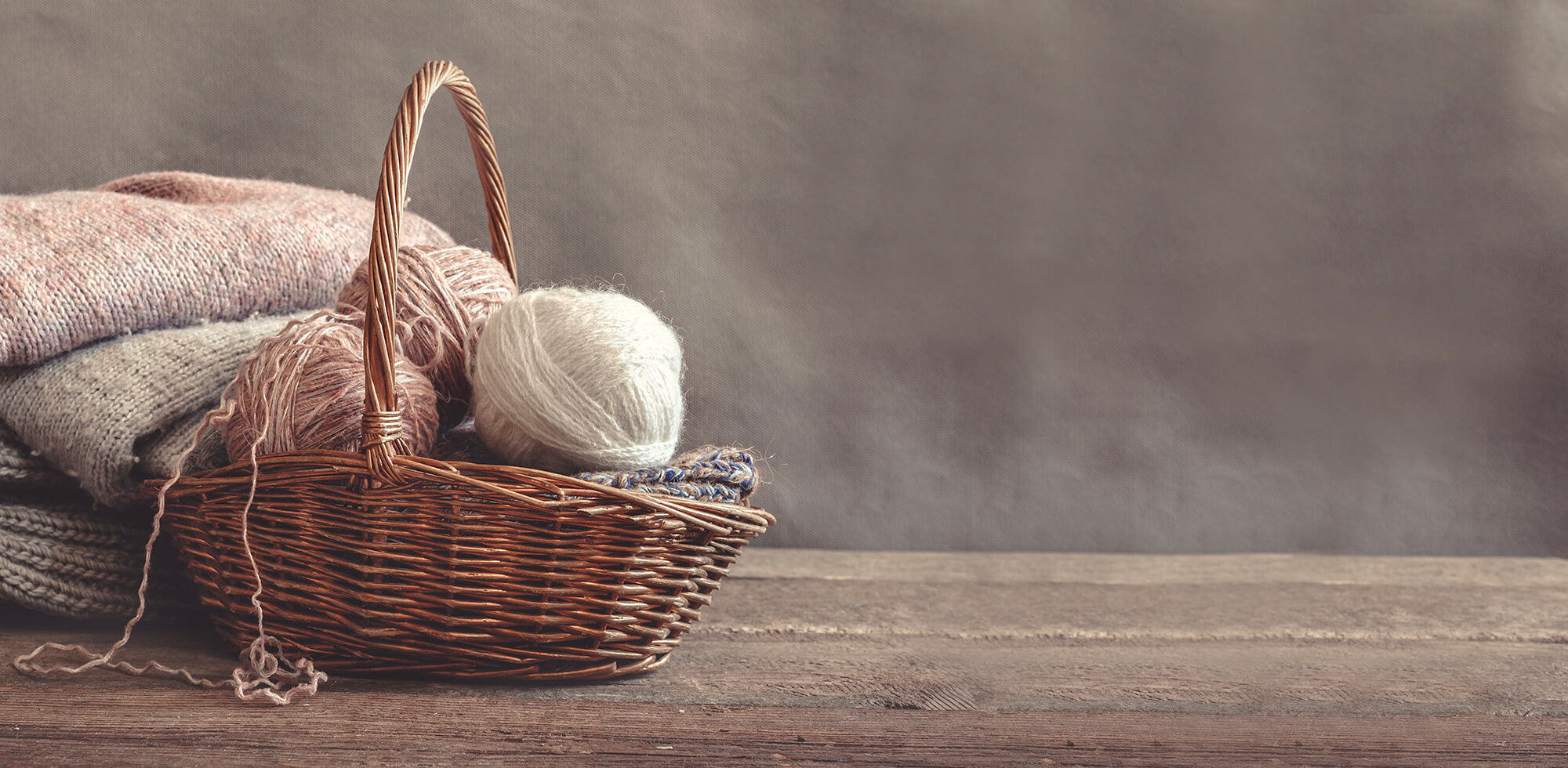By Claudia Ostrop
So, the final stitch is cast off, the ends have been woven in, and you're done!
Wait, there's more to it...
Of course, it's tempting: the cozy sweater, the stylish cardigan, or the large shawl are finished, and you want to wear them. But even when a beautiful knit is waiting to be worn for the first time, it's worth being a bit patient to turn a nice piece into a really beautiful one!
As recommended in every Pascuali pattern (and echoed by numerous other designers), it's essential to grant the finished knit a rejuvenating bath. This step not only ensures freshness and cleanliness but, more significantly, allows the stitch pattern to flourish. Yarns often unveil their true splendor only after this initial wash, as the fibers relax, and any subtle tension variations among stitches are harmonized. When comparing "freshly knitted" with "freshly washed," the stitch pattern is almost invariably more beautiful and even when the knit has had a bath.

To Wash or Just Dampen?
Sometimes you might find the advice that it's enough to dampen a knitted garment in order to block it: spray it with a spray bottle or cover it with a damp cloth for a while. Or even work it with a steam iron. But honestly - residues from the production and storage process can still be found in the yarn, maybe you took your project here and there, knitted in a café or on the train - washing certainly won't hurt as you start your life together...
It's best to soak the piece in lukewarm water. In the sink or a bowl with a small dash of wool detergent, let it relax for 15 to 20 minutes. Then rinse it gently and squeeze out the water. A thick terry towel absorbs a lot of residual moisture. By the way, you can find many tips on how to care for wool and hand-knits best here.
Once the knit is just damp (not dripping wet), it's time to dry it: and if necessary, block it.

Unlocking the Mysteries of Blocking
Blocking means shaping the damp knit into the desired shape and fixing it in that position until it's completely dry.
Do you really always have to block a new sweater, shawl, or socks (or whatever you've knitted)? Clear answer: No. If a knit has the desired shape after finishing and washing, it usually suffices to let it dry flat. Socks and hats shape themselves with the first wear anyway...
Lace patterns, however, only bloom with right treatment. Blocking helps to open up the airy patterns and make them clearly visible. Shawls often develop curled edges naturally, making them prime candidates for benefiting from the blocking process as they dry.
Shaping
For many knits, it's enough to give them a little shaping while drying. For example, if you spread a sweater on a terry towel, its coarse structure usually keeps the knit in the desired shape. If you only need to make slight corrections to the measurements, shaping is completely sufficient. You can widen the neckline a bit, as well as the body, or stretch the sleeves and/or body length a bit. While you should never dry cardigans or sweaters on a hanger (it stretches them out!), you can use gravity in moderation: If, for example, you want the sleeves of a finished knit to be a bit longer (because you were too impatient and cast off too early...), lay the garment on a clothes drying rack (with a towel underneath!) and let the sleeves hang down the sides. But check in between! The garment shouldn't be too wet for this. If the sleeves fit, but you want the body to be a bit longer, you can use a broomstick: thread it through the sleeves and then hang it between two chairs. This way, the body can stretch a bit - but here too: check occasionally that it doesn't get too long.

Blocking
If you aim to refine a lace pattern, define the shape of a garment, or correct pronounced curling in your knits, blocking becomes essential. It's time to get your blocking tools!
First, you need a base on which the garment can be spread out and fixed. There are special blocking mats made of thick foam rubber that can be pieced together like puzzle pieces to the desired size and shape. A good (usually cheaper) alternative is the so-called puzzle mats, which are available for children. But a yoga mat or styrofoam boards also work well for blocking. It's crucial that the base is thick and soft enough to hold the blocking pins in place.
Here's how to do it: Spread the squeezed, damp garment on the base and shape it. For this, T-pins or knit blocker combs are inserted into the edge of the knit and used to fix it in the desired position. T-pins look like large sewing pins, except they have a wire lying across instead of a head (making them look like a T). They are particularly suitable for pinpoint blocking, e.g., if you want to work out and emphasize a picot edge. If you want a straight edge, be careful with T-pins so that the edge doesn't get any unwanted bulges. Or you can use knit blockers combs: you can get them with 4 or 8 needles at the Pascuali-Shop. Theym are particularly suitable for fixing longer straight edges cleanly. If you want to block large shawls, lace blocking wires are the perfect solution: the thin wires are threaded through the outer edges of the garment and fixed on the base with T-pins. This ensures particularly even tension and results in a perfectly straight edge. With the help of flexible wires, curves can also be ideally shaped.

Shaping Socks and Hats
Earlier, we talked about socks and hats, which usually don't need to be blocked because they shape themselves when worn on the feet and head, respectively. The so-called sock blockers or sock forms are more suitable for presenting self-knitted socks beautifully than for blocking them. The wooden boards resemble the silhouette of a foot, and socks can be dried (or presented) wrinkle-free on them.
After washing, hats can be dried in a very simple way to avoid creases: simply inflate a balloon to the approximate size of the head circumference. Pull the freshly washed hat over the balloon and let it dry. Done!
Finally, you might wonder if you need to block knitted items every time you wash them. Don't worry, most of the time, it's enough to shape the items as described above and let them dry. Only with large shawls, knits made from lace yarns, or with lace patterns, you will need to use the blocking tools again after washing. They will likely lose their previous ideal shape after the bath. But since woolen items don't really need to be washed often, this extra effort shouldn't deter you.




